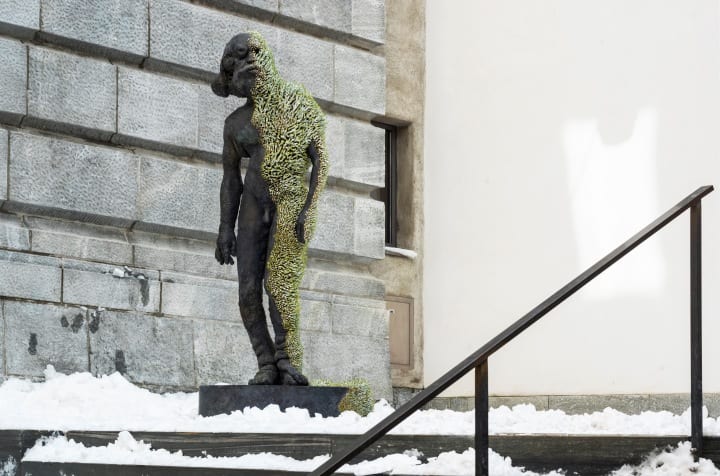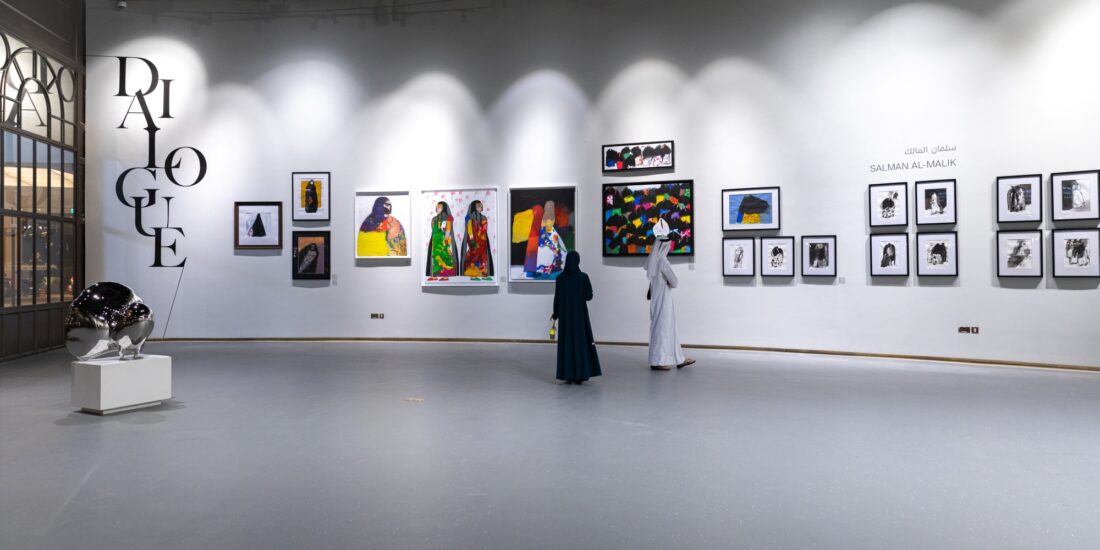Damien Hirst Takes Over Lake St. Moritz
A major exhibition of over 40 works by British artist Damien Hirst has opened across five locations in St. Moritz, Switzerland. It includes three large-scale outdoor sculptures becoming the first time that any artwork has been exhibited on the lake.
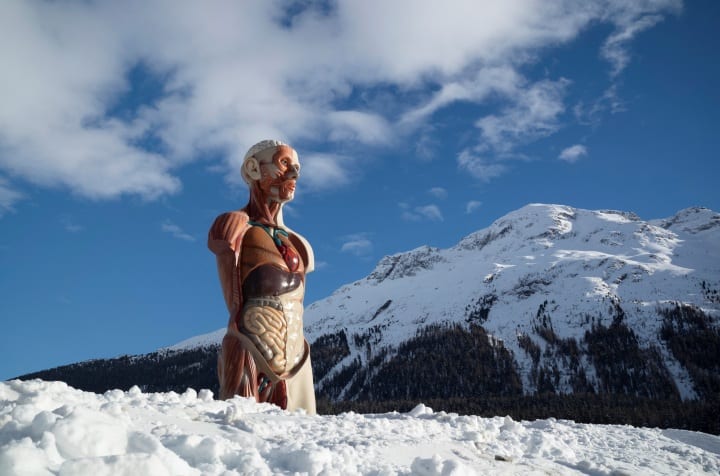
Damien Hirst, The Temple, 2008; Installation image of Lake St. Moritz, 2021. Photographed by
Felix Friedmann ©Damien Hirst and Science Ltd. All rights reserved, DACS 2021
British contemporary artist Damien Hirst is known for works with a shocking factor further established through the humungous commissioned work in Doha titled Miraculous Journey consisting of 14 bronze sculptures that chronicled the gestation of a fetus inside a uterus, from conception to birth. While his work might border on attention-grabbing themes and techniques, he is also by far the most successful artist with his works drawing bigger prices at auction and in galleries than any other living artist, according to ARTnews magazine.
He has now conquered the snow-clad mountains of St. Moritz with an exhibition titled Mental Escapology, organised with the assistance of the city of St. Moritz. The exhibition is for view till March 24, 2021, in multiple venues including two historical buildings: the neo-classical Forum Paracelsus in St. Moritz Bad and the Protestant Church in the centre of St. Moritz.
The most talked-about part of the exhibition includes three large-scale outdoor sculptures.
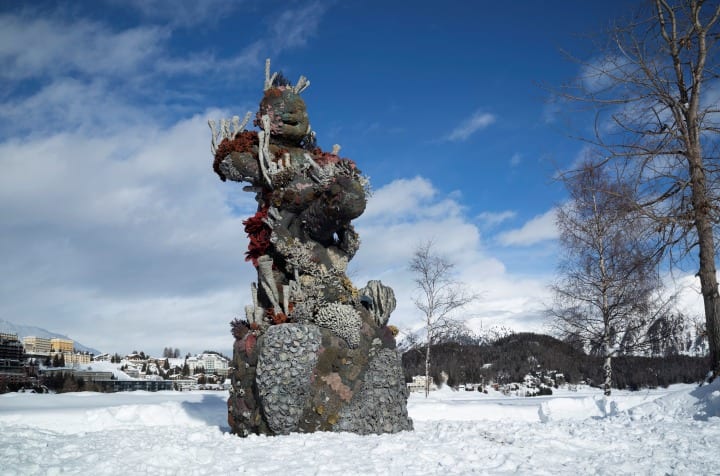
Damien Hirst, Two Figures with a Drum, 2013. Installed in St. Moritz, 2021. Photographed by Felix Friedmann ©Damien Hirst and Science Ltd. All rights reserved, DACS 2021
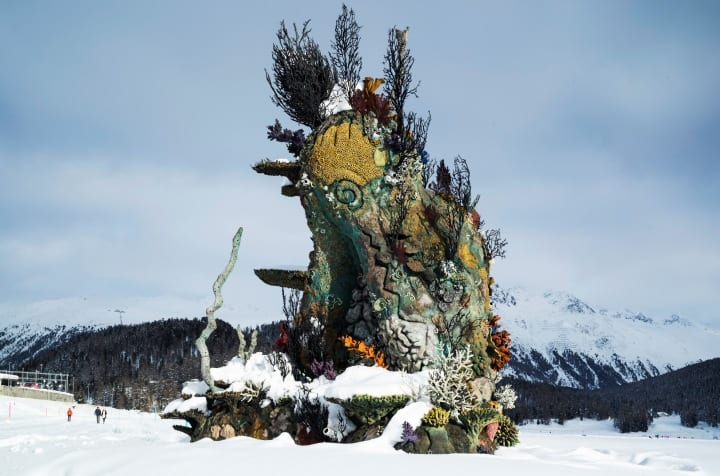
Damien Hirst, The Monk, 2014. Installation image of Lake St. Moritz, 2021. Photographed by Felix Friedmann ©Damien Hirst and Science Ltd. All rights reserved, DACS 2021
Hirst’s 12-foot-high sculpture The Monk is exhibited in the centre of the frozen Lake St. Moritz and Two Figures with a Drum has been installed on the southwestern edge of the lake. Temple, a 21- foot painted bronze sculpture depicting an anatomical model, is exhibited at Waldhaus Am See. Proteus, also Damien Hirst’s Treasures series depicting the shape-shifting sea god from Greek mythology, is located outside the Protestant Church.
The installation, The Monk represents the first time an artwork has been exhibited on the lake itself. Additionally, this is Hirst’s first public exhibition in Switzerland.
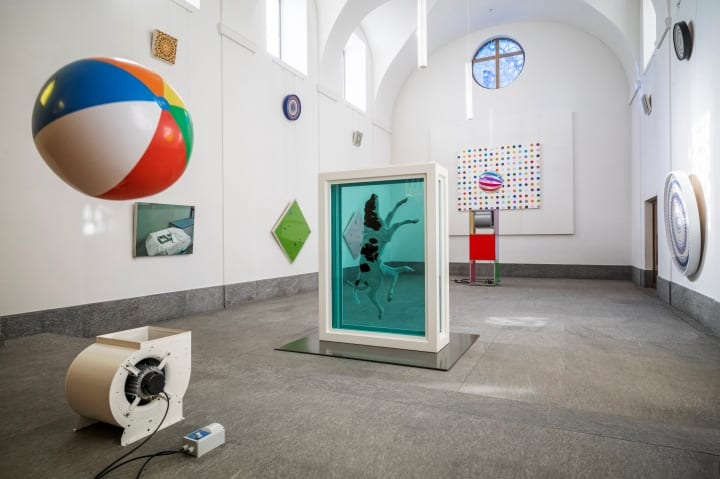
Damien Hirst, Proteus, 2012. Installed in St. Moritz, 2021. Photographed by Felix Friedmann ©Damien Hirst and Science Ltd. All rights reserved, DACS 2021
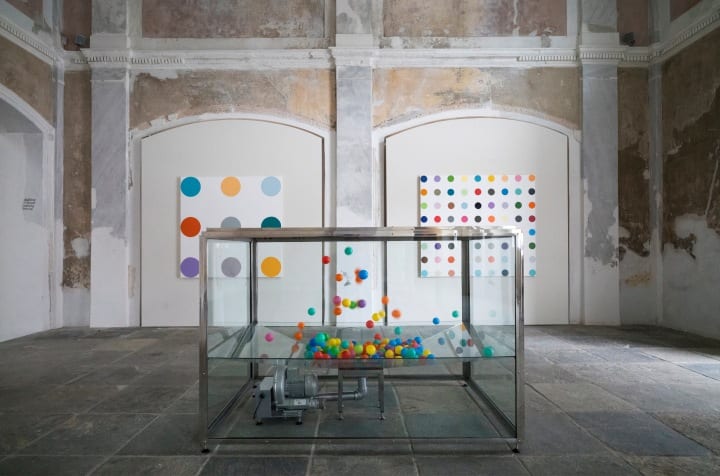
Mental Escapology at the Forum Paracelsus, 2021. Photographed by Felix Friedmann ©Damien Hirst and Science Ltd. All rights reserved, DACS 2021
A large part of the exhibition is in Forum Paracelsus, an 18th-century building located on the site of a former thermal bath dating back to 1400 BC. Known across generations for the healing and therapeutic properties of its ferrous waters, the site is a fitting location for Hirst’s work in which the exploration of science and modern medicine has been an enduring theme, according to the curators. The exhibition has been curated by the art director Jason Beard, who has previously collaborated with Hirst on web and editorial projects and organised by the dealer Oscar Humphries.
Key work exhibited includes a surgical instrument cabinet titled Stripper, from 2006, in which medical apparatus are meticulously arranged within a stainless-steel display cabinet, previously unseen installations from Hirst’s Mental Escapology series, formaldehyde works from the Natural History series and a photorealist painting titled Surgical Tools for Caesarean.
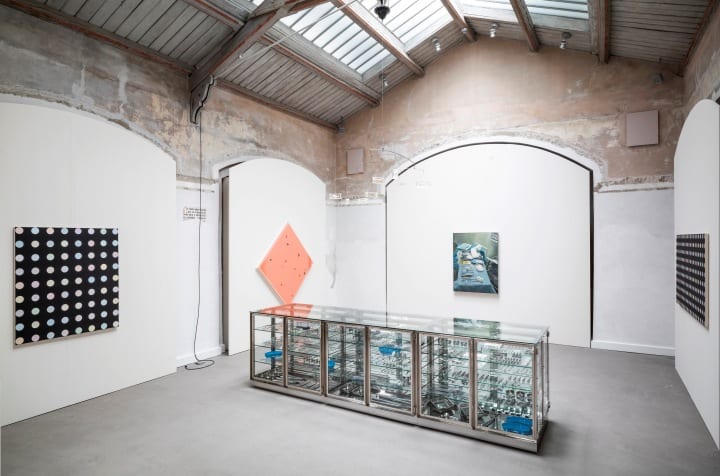
Mental Escapology at the Forum Paracelsus, 2021. Photographed by Felix Friedmann ©Damien Hirst and Science Ltd. All rights reserved, DACS 2021
Mental Escapology also features previously unseen paintings, including works from the Spot (Pharmaceutical) Paintings series Tests, Reagents, Diagnostics, and Random Samples, which dates from 1998. Unlike Hirst’s best-known pharmaceutical paintings, these works consist of unique, irregularly-sized, and coloured spots that rarely follow any uniform grid structure.
Exhibited in the church is a selection of Hirst’s butterfly paintings. In his earliest series, titled Butterfly Colour Paintings, butterflies are placed in random positions on the canvas, appearing to have recently landed in wet gloss paint.
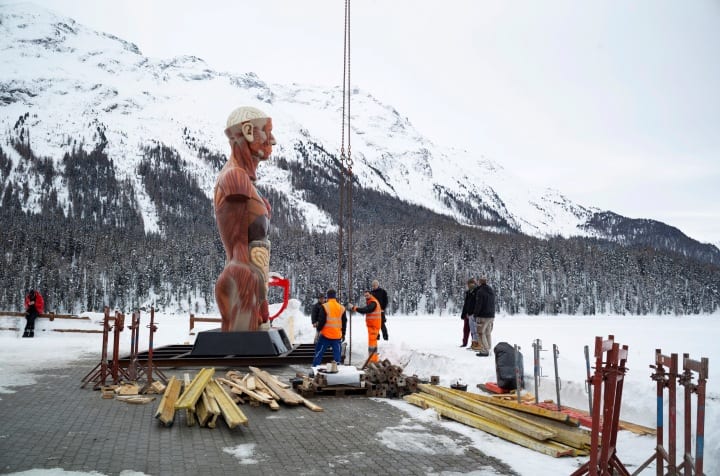
Damien Hirst, Temple, 2008. The installation process in St. Moritz, 2021. Photographed by Felix Friedmann ©Damien Hirst and Science Ltd. All rights reserved, DACS 2
“Most of the works are loans that come from the artist. A few key works have been borrowed from private collections,” Humphries says about the sourcing of the collection.
Hirst’s showstopping art is a natural fit for the dramatic mountain backdrop. “Damien’s sculpture The Monk—something from the deep—on a frozen lake is a kind of perfect impossible thing. The engineering behind it was difficult, impossible even. But one of Damien’s central themes is the impossible so it’s an amazing symbiosis,” says Humphries.
Curator Jason Beard says: “Damien has always thought about science as religion and religion as science, so it’s fascinating to be able to draw links between his work and these sites where pilgrims have sought healing for over 3,000 years. Being able to bring this survey to four very distinct, historical, and naturally beautiful settings is a very exciting opportunity.”
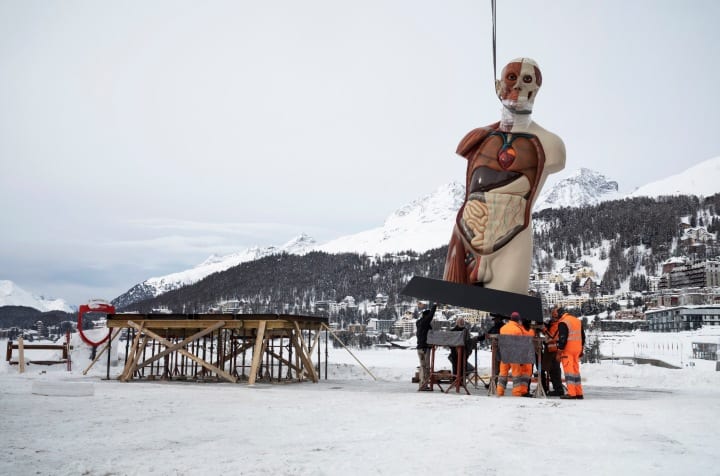
Damien Hirst, Temple, 2008. The installation process in St. Moritz, 2021. Photographed by Felix Friedmann ©Damien Hirst and Science Ltd. All rights reserved, DACS 2


